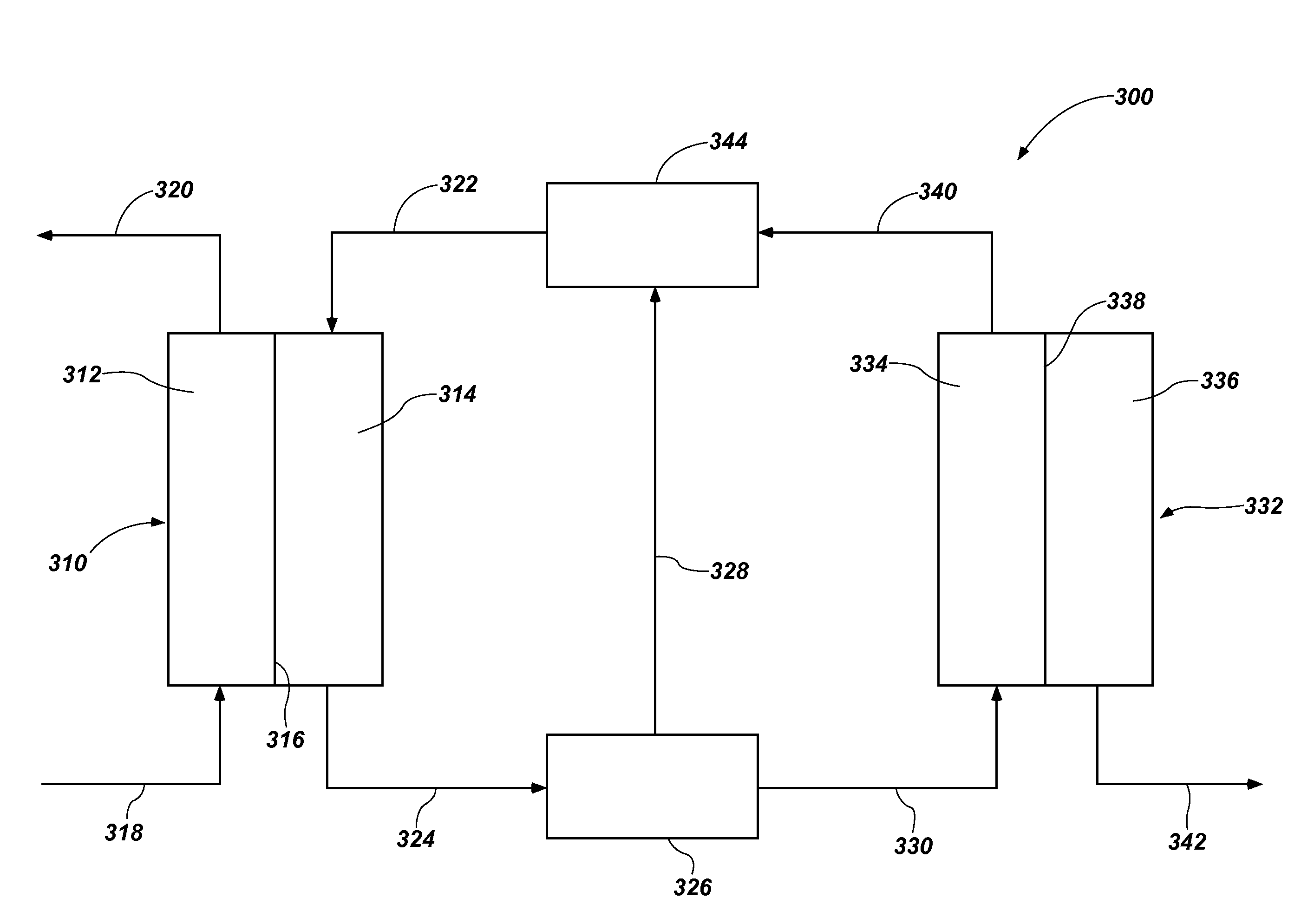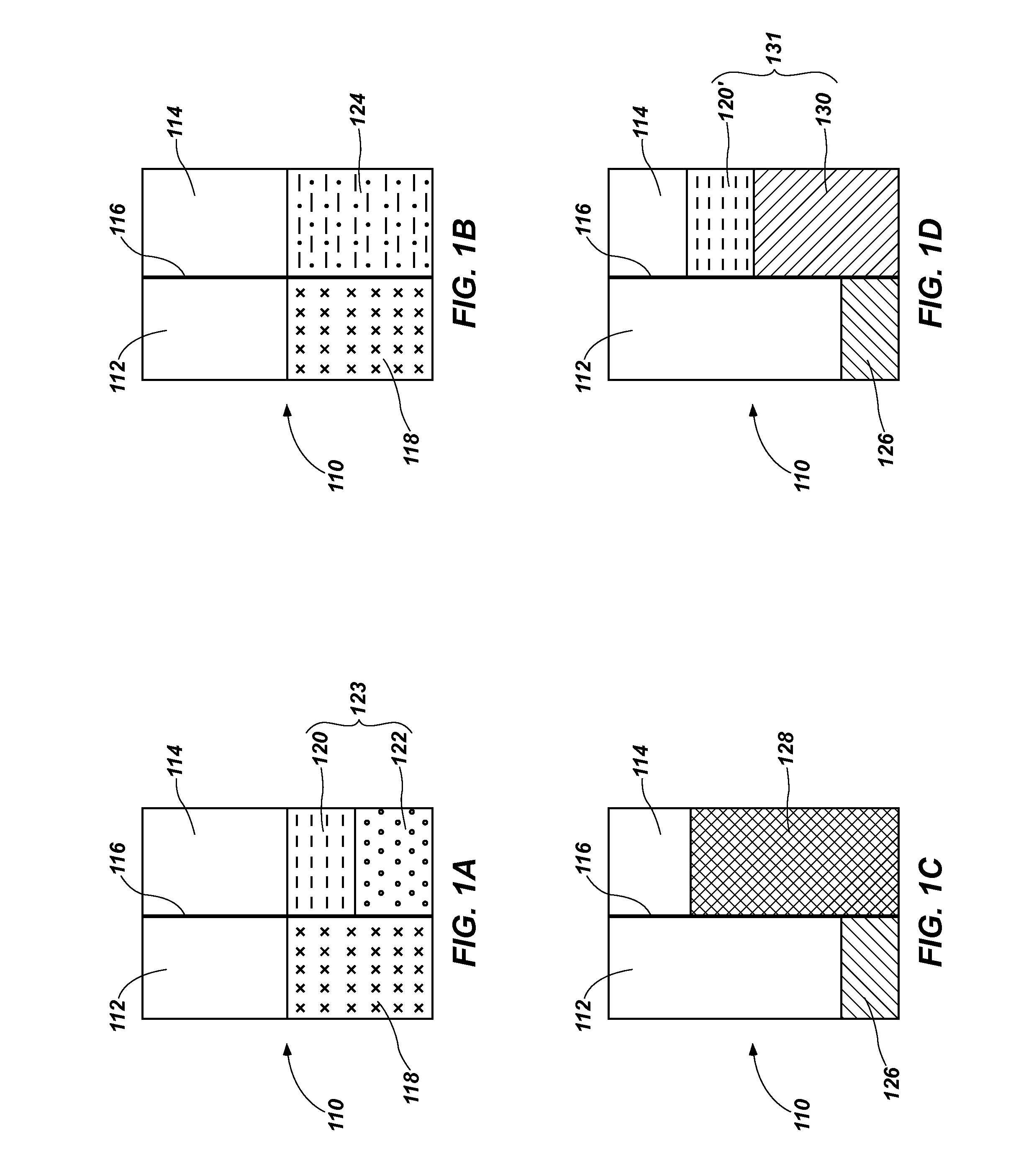Methods and systems for treating liquids using switchable solvents
- Summary
- Abstract
- Description
- Claims
- Application Information
AI Technical Summary
Benefits of technology
Problems solved by technology
Method used
Image
Examples
example 1
[0054]The osmotic pressure of an aqueous solution including 59 weight percent cyclohexyldimethylaminium bicarbonate (7.6 molal) was extrapolated to be about 13.3 Osm / kg (325 atm) of osmotic pressure. By way of comparison, a simulated ocean water solution including 3.5 weight percent dissolved solids had an osmotic pressure of about 27 atm or about 1.0 Osm / Kg. This extrapolation is achieved by extending the linear relationship in osmolality dependence on the concentration of the cyclohexyldimethylaminium bicarbonate from concentrations between 0.09 and 1.81 molal. The osmolalities were found through freezing depression experiments on an osmometer. The correlation between freezing point depression, osmolality, and osmotic pressure is well established. A graphical representation of the osmolality data for of aqueous cyclohexyldimethylaminium bicarbonate solutions at different cyclohexyldimethylaminium bicarbonate concentrations is shown in FIG. 4
example 2
[0055]Aqueous saline solutions including house deionized water and varied concentrations of sodium chloride were separately provided on first sides of Hydration Technology Innovations (HTI) cartridge membranes, with aqueous draw solutions having an initial concentration of 7.6 molal cyclohexyldimethylaminium bicarbonate provided on second sides of the HTI cartridge membranes. The aqueous saline solutions and the aqueous draw solutions were each maintained at a temperature of about 30° C. An osmotic pressure differential across each of the HTI cartridge membranes generated a flow of the house deionized water from the first side of each of the membranes, across each of the membranes, and to the second side of each of the membranes. During each test, flux was allowed to stabilize over a period of from about one minute to about three minutes, and flux during a subsequent ten minute period was averaged to determine the initial flux of the system. A graphical representation of flux agains...
example 3
[0056]Cyclohexyldimethylamine (68.4 g) was added to deionized water (4.095) kg and stirred overnight to form a homogenous 16.7 g / L solution. This solution was nm through a RO unit containing a polyamide thin-film composite membrane. During the 4 hr experiment 3.925 kg of purified water was produced, divided into 17 samples of approximately 231 g each. The feed solution became torpid when the RO process was begun and an organic layer formed within the removal of the first 200 g of liquid. When the separation was complete the remaining feed solution and first wash of the system contained organic layers totaling 67.5 ml (59.4 g). On average the purified water contained less than 0.06 g / L cyclohexyldimethylamine measured by the GC FID and the concentration did not significantly increase or decrease during the course of the experiment. This is a 99.65% rejection rate of the dissolved cyclohexyldimethylamine.
PUM
| Property | Measurement | Unit |
|---|---|---|
| Pressure | aaaaa | aaaaa |
| Concentration | aaaaa | aaaaa |
| Ratio | aaaaa | aaaaa |
Abstract
Description
Claims
Application Information
 Login to View More
Login to View More - R&D
- Intellectual Property
- Life Sciences
- Materials
- Tech Scout
- Unparalleled Data Quality
- Higher Quality Content
- 60% Fewer Hallucinations
Browse by: Latest US Patents, China's latest patents, Technical Efficacy Thesaurus, Application Domain, Technology Topic, Popular Technical Reports.
© 2025 PatSnap. All rights reserved.Legal|Privacy policy|Modern Slavery Act Transparency Statement|Sitemap|About US| Contact US: help@patsnap.com



